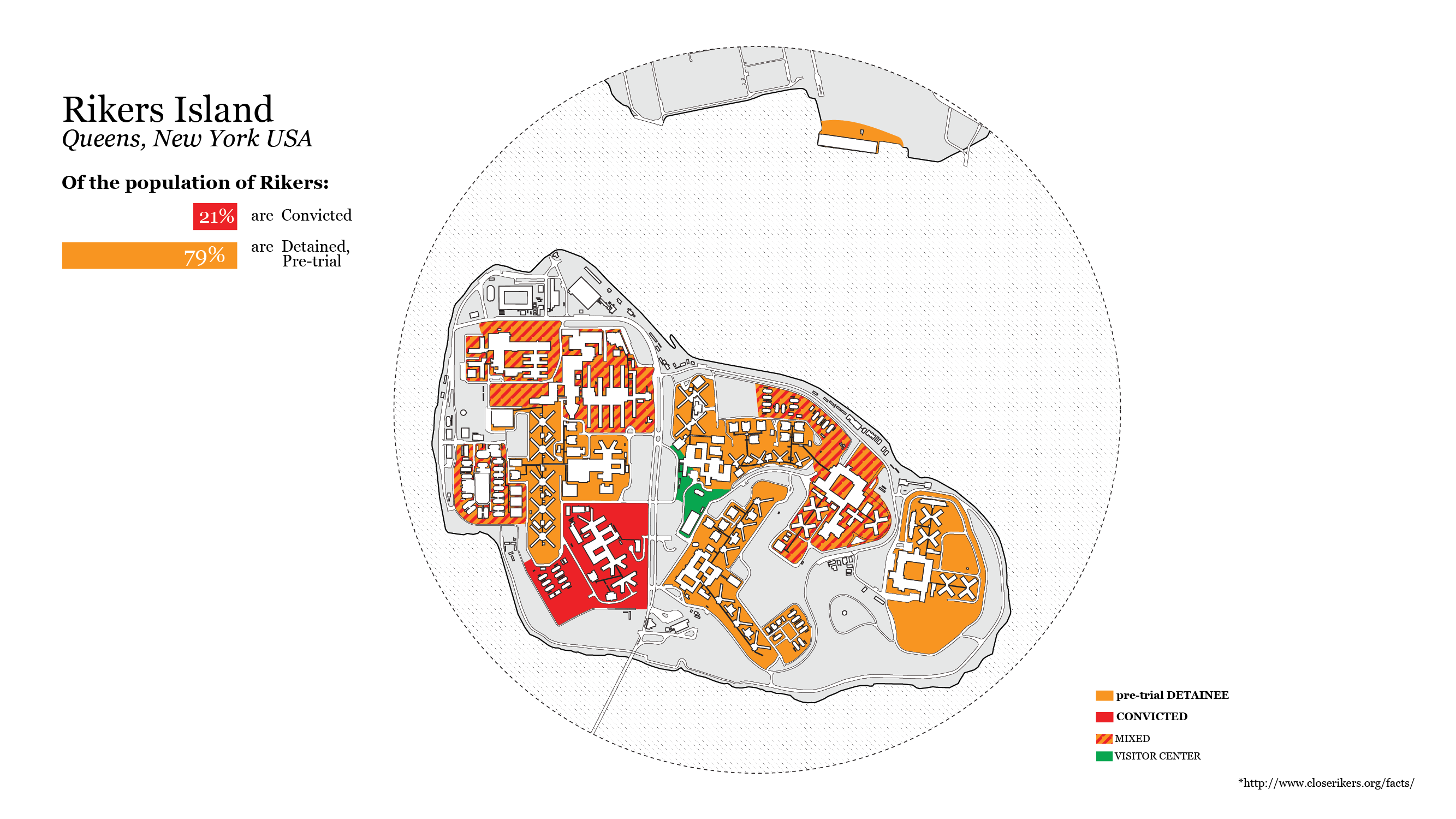The prohibition of photography in the interiors of police stations, secured spaces within courts, and jails makes it difficult to fully describe the processes of arrest, arraignment, and detainment. Understanding the nuances of these processes and details of the locations they happen within is critical to understanding the specific ways in which they disproportionately disadvantage the poor and people of color. This drawing was created to communicate the procedures, people, and spaces a person encounters after their arrest in order to make visible these obfuscated processes of the criminal justice system. Information was gathered from General Services Administration design guides and from interviews with public defenders, legal aid representatives, the Center Court for Innovation, and jail and court architects. This drawing was done in collaboration with Stella Ioannidou.
View Project ⟶
The harsh conditions in the densifying ger districts in Ulaanbaatar, Mongolia are exacerbated by a lack of waste, water, and heat infrastructures and by the cultural newness of sedentary life for most residents. New infrastructural developments funded by the central government are increasingly unlikely as the country is heavily in debt to the International Monetary Fund. As problems created by proximity and density grow in the ger districts, the need for community organizing and development increases as well. The Ger—structurally autonomous, transportable, and with a low occupant capacity—has worked well to house nomads for millennia but its usefulness has not translated to sedentary urban life. Using the existing housing typology of the ger to create larger span spaces both enables residents to host larger gatherings of community and allows residents to make these spaces themselves at a low cost. This project seeks to both prototype new components for the ger and ways of manufacturing them so residents can build larger spaces and sell the manufactured components themselves.
View Project ⟶
Approximately 80% of the persons being held at Rikers Island have not been charged with a crime. The rigid criminal justice system in New York City provides few opportunities for an individual (especially a poor individual or a person of color) to break loose from the cycle of incarceration after being arrested—regardless of the crime. In addition to crucial new policies on bail and funding for diversion to services, the spaces within the criminal justice system need to be redesigned to facilitate alternative processes that prevent the poor from being unreasonably detained without a conviction.
View Project ⟶
Jamaica Bay's coast and islands have drastically changed in size and shape over the last hundred years. While the area was intentionally reshaped to accommodate large waste infrastructural nodes essential to the growth and functioning of the city, runoff and leaching from these infrastructures have contaminated of the bay's water resulting in persistent erosion of the coasts and wetlands of Broad Channel island, the only inhabited island in the bay, and of the Gateway National Recreation Area, a park established on the undeveloped shores of Brooklyn and Queens and on the islands within the bay. As of ten years ago, these natural spaces are regularly reconstructed and maintained using the sediment byproduct of shipping channel deepening and maintenance operations for the New York and New Jersey ports. This project explores how the unintended byproducts and effects of each municipal process do not negate the effects of each other, but rather serve as multiple outputs that demand a cyclical process of reconstruction of the 'natural environment' in which nature will continue to be redefined by the urban systems that are enabling their re-production.
View Project ⟶
The techniques of sustaining sovereignty, waning in a globalized world, have been to visibly assert protection over national borders. However as technologies of separation are shown to be inadequate to protect nations against real and perceived threats, policing becomes the alternative. Policing employs the same logic of the wall, in that its purpose is to separate bodies into neat binaries (ie, here/there; citizen/non-citizen), but is not bound to a specific geographic location. Customs and Border Protection Agents under the Department of Homeland Security expand the concept and logic of the border and transport it to within the interior of the country, redefining the American Border.
View Project ⟶
This paper seeks to understand the mechanisms of power that expose certain individuals, disproportionately, to acts of violence through the examples and tools for thinking that Judith Butler identifies in her book Precarious Life. Butler positions this book as a response to the actions of the US government and trends in popular discourse that effectually heightened the vulnerability and precarity within certain populations following the events of 9/11. The five essays that comprise this book situate the conversation of the production of precarity both within an investigation of larger mechanisms of power as well as in a discussion of ethics. This exploration of ethics and morality gives us an understanding of how it could possibly be that different forms of normative power could serve as a moral authority and thus legitimize violence against anyone. Through an intimate view of the body and the precarity we communicate through it, she deftly positions the reader directly within the discourse. This book can be read as a call to arms in which Butler illuminates both our complicitness within the production and enforcement of precarity as well as our agency to reconfigure the discourse and the current situation.
View Project ⟶